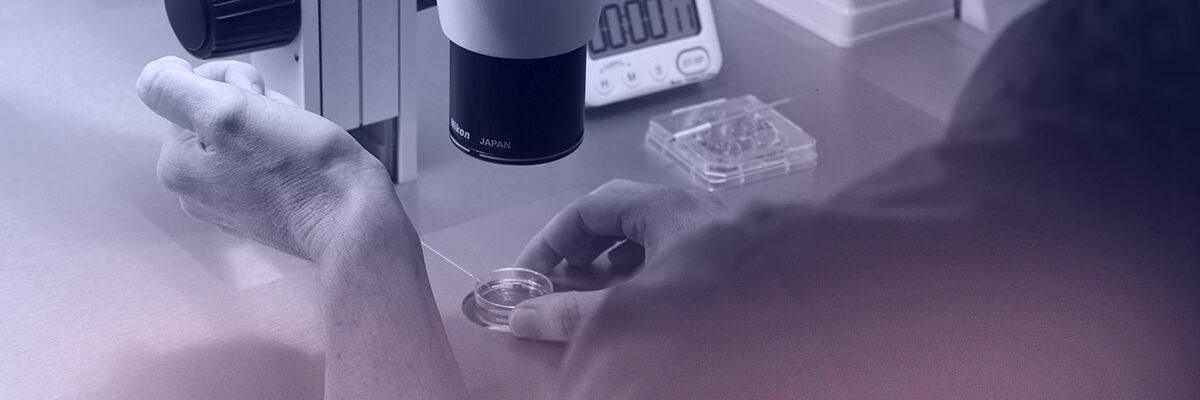Eggs vitrification
If you are thinking of delaying motherhood, to vitrify your eggs will give you the possibility of having them available in the future
One of the reasons why fertility problems are on the increase is that women are delaying motherhood.
We postpone this decision and may find a good mental health, a good economic position, a good social standing,… but our bodies are no longer prepared, our options to have children and pass on our genes become more limited, either because we are no longer able to produce eggs or because the eggs we produce are no longer good enough.
Oocyte vitrification presents an alternative for women who wish to delay the time to become a mother until they have achieved the necessary stability, keeping the same chances of becoming pregnant than they have at the time their eggs are frozen.
What is oocyte vitrification?
Oocyte vitrification is a technique whereby a woman’s eggs are frozen when she is fertile. Vitrification provides a higher thawing survival rate than other egg freezing techniques. It is a safe technique based on preventing the formation of ice crystals in the cells and, therefore, preventing cell destruction when the time to thaw the eggs comes.
When to vitrify your eggs?
A good oocyte quality is essential. It is better to vitrify oocytes from young women who do not have fertility problems than oocytes from patients of advanced reproductive age, with declining numbers and quality.
When is oocyte vitrification advised?
- When one wants to delay the time of motherhood and fertility needs to be preserved.
- When medical and surgical factors affect a woman’s fertility or a chemo- or radiotherapy treatment is going to be initiated.
- When one does not wish to freeze embryos during an IVF treatment for ethical or moral reasons.
- When a low ovarian response is limiting the chances to become pregnant.
- For patients with endometriosis who want to postpone their fertility because of the effect this disease can have on ovarian reserve.
How is the oocyte vitrification process like?
An oocyte vitrification cycle is very similar to the first stages of an IVF treatment. A controlled ovarian stimulation is performed to increase the number of eggs that can be produced in a cycle. Oocytes are retrieved from the ovaries and, once their quality has been verified, they are vitrified until they are eventually used. Oocytes can remain vitrified indefinitely and keep their reproductive power intact, just as it was at the time of ovarian stimulation. Furthermore, the patient’s fertility is not affected for undergoing a stimulation cycle to vitrify oocytes.
At Instituto Bernabeu, each patient has their embryos arranged in a unique location in the cryo tanks, which is not shared with other samples or patients, so that they are safeguarded from possible cross contamination or impairment.
10 things you should know if you want to freeze your eggs
Egg Retrieval is painless. It is carried out by means of a simple vaginal procedure, and the patient is lightly sedated.
Whilst there is no minimum nor maximum age, it is advisable to undergo the procedure before 35 years of age in order to obtain a sufficient number of good quality eggs because, from 35 years of age onwards, there tends to be a decrease in both their quantity and quality.
The gynaecologist will design a stimulation protocol that takes between 8 and 10 days. In order to obtain the largest possible number of oocytes, patients need to go to the health clinic an average of three times to have ultrasound scans. They are used in order to determine the most appropriate doses of hormones for each woman and optimise the response of the ovaries.
No, this won’t be necessary. Egg retrieval is a simple process that takes around 15 minutes and you will only need to take time off work on the day the procedure takes place. Afterwards, it is recommendable to spend the afternoon resting and to avoid driving.
The purpose of stimulation is to achieve an appropriate number of eggs. Personalising the process and medication are key in ensuring that the largest possible number of eggs are retrieved in a single ovarian retrieval. Should an insufficient number of eggs be retrieved – for example when ovarian reserve has diminished due to age – an additional cycle is recommended in order to increase the accumulated quantity of eggs.
Once the eggs have been cryopreserved, they remain in the same condition and do not deteriorate. They do not become damaged over time. However, it should be kept in mind that the age limit in Spain for women to have assisted reproduction treatment is around 51.
A simple process that does not require hormones nor ovarian stimulation begins. It’s only necessary to prepare the body for receiving the embryo and schedule the right time for implanting. Meanwhile, the eggs will be thawed and fertilised using the male partner’s sperm in the laboratory and the resulting embryo is transferred to the mother’s uterus. Embryos that are not transferred can be frozen for future courses of treatment.
Women who decide to become single mothers can use donor sperm. The eggs are fertilised using sperm bank and once the child is born it is legally registered as the child of a single-parent family.
Vitrification will not have an impact on the future child. There are no differences between children born following in vitro fertilisation using frozen oocytes or embryos and those born following pregnancy during a natural cycle.
If, in the end, a patient decides not to use her frozen eggs, she can choose what to do with them. There are three possible options. One of them consists of donating the eggs so that other couples can have the opportunity of becoming parents. They can also be donated to science or discarded.
